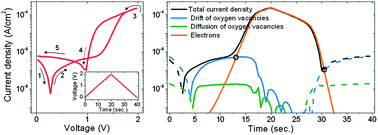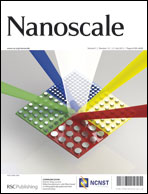Elastic resistance change and action potential generation of non-faradaic Pt/TiO2/Pt capacitors†
Abstract
Electric current in the mixed ionic–electronic conductor TiO2 is hysteretic, i.e. history-dependent, and its use is versatile in electronic devices. Nowadays, biologically inspired, analogue-type computing systems, known as neuromorphic systems, are being actively investigated owing to their new and intriguing physical concepts. The realization of artificial synapses is important for constructing neuromorphic systems. In mammalians' brains, the plasticity of synapses between neighbouring nerve cells arises from action potential firing. Emulating action potential firing via inorganic systems has therefore become important in neuromorphic engineering. In this work, the current–voltage hysteresis of TiO2-based non-faradaic capacitors is investigated to primarily focus on the correlation between the blocking contact and the elasticity, i.e. non-plasticity, of the capacitors' resistance change, in experimental and theoretical methods. The similarity between the action potential firing behaviour in nerve cells and the elasticity of the non-faradaic capacitors is addressed.


 Please wait while we load your content...
Please wait while we load your content...